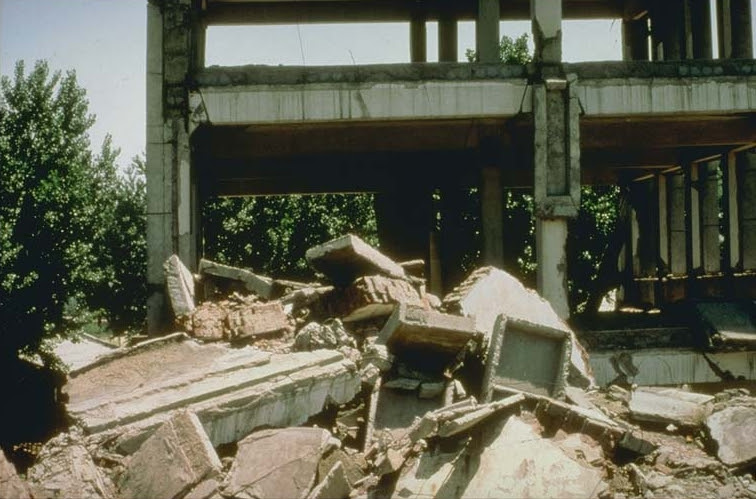segunda-feira, julho 28, 2025
O Grande Sismo de Tangshan foi há 49 anos....
Postado por
Fernando Martins
às
00:49
0
bocas
![]()
Marcadores: China, Grande Sismo de Tangshan, previsão de sismos, revolução cultural, sismologia
domingo, julho 28, 2024
O Grande Sismo de Tangshan foi há 48 anos....
Postado por
Fernando Martins
às
00:48
0
bocas
![]()
Marcadores: China, Grande Sismo de Tangshan, previsão de sismos, revolução cultural, sismologia
sexta-feira, julho 28, 2023
O Grande Sismo de Tangshan foi há 47 anos....
Postado por
Fernando Martins
às
00:47
0
bocas
![]()
Marcadores: China, Grande Sismo de Tangshan, previsão de sismos, revolução cultural, sismologia
quinta-feira, julho 28, 2022
O Grande Sismo de Tangshan foi há 46 anos....
Postado por
Fernando Martins
às
00:46
0
bocas
![]()
Marcadores: China, Grande Sismo de Tangshan, previsão de sismos, revolução cultural, sismologia
quarta-feira, julho 28, 2021
O inacreditável Grande Sismo de Tangshan foi há 45 anos....
Postado por
Fernando Martins
às
00:45
0
bocas
![]()
Marcadores: China, Grande Sismo de Tangshan, previsão de sismos, revolução cultural, sismologia
terça-feira, julho 28, 2020
O Grande Sismo de Tangshan foi há 44 anos
Postado por
Fernando Martins
às
04:40
0
bocas
![]()
Marcadores: China, Grande Sismo de Tangshan, previsão de sismos, revolução cultural, sismologia
domingo, julho 28, 2019
O Sismo de Tangshan foi há 43 anos
Postado por
Fernando Martins
às
04:30
0
bocas
![]()
Marcadores: China, Grande Sismo de Tangshan, previsão de sismos, revolução cultural, sismologia
quinta-feira, julho 28, 2016
Há 40 anos houve um espantoso sismo em Tangshan
Postado por
Fernando Martins
às
00:40
0
bocas
![]()
Marcadores: China, Grande Sismo de Tangshan, previsão de sismos, sismo, Tangshan
segunda-feira, julho 28, 2014
Há 38 anos a China provou que ainda não era possível prever sismos
Postado por
Fernando Martins
às
23:38
0
bocas
![]()
Marcadores: China, Grande Sismo de Tangshan, previsão de sismos, revolução cultural, sismologia
domingo, julho 28, 2013
O sismo que mais mortos provocou no século XX foi há 37 anos
Postado por
Fernando Martins
às
00:37
0
bocas
![]()
Marcadores: China, Grande Sismo de Tangshan, Partido Comunista Chinês, previsão de sismos, revolução cultural, sismo, sismo de 1975 de Haicheng, sismologia, Tangshan








